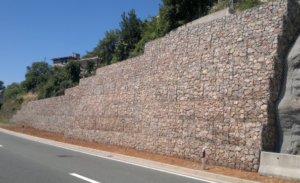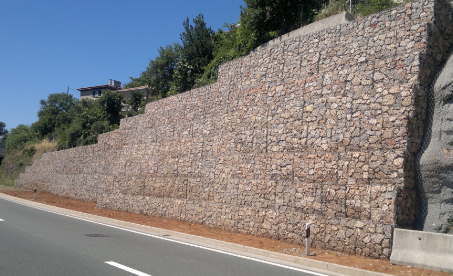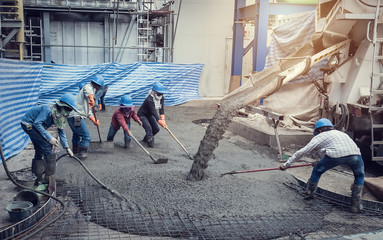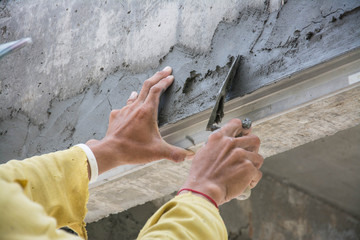Colorado Springs Masonry are building methods that use brick, concrete blocks or structural clay tile held together with mortar. It can withstand natural disasters like hurricanes and earthquakes. Masonry can also help protect properties from fires.

Masonry structures are very durable, making them ideal for use in commercial and residential construction. They provide a number of advantages over other building materials, including fire resistance, soundproofing, and energy efficiency. However, they are susceptible to damage caused by weather and other factors. Understanding this damage and working with a qualified restoration contractor can help preserve the integrity of your masonry structure.
Bricks and stones in a masonry structure are held together by mortar, which should be made with lime, sand, and gypsum in the proper ratio. It should also not contain any cement, which is often used for sidewalks and patios. This type of mortar is typically called “cement mix.” It is not suitable for masonry structures, which require stronger and more durable materials.
Hot weather conditions can cause a number of problems for masonry. High temperatures can accelerate water evaporation from mortar, which decreases its strength. This can result in the formation of cracks in the masonry and may lead to leaks. Masonry that is exposed to repeated cycles of water penetration, freezing, and thawing can develop spalling, which is the removal of bricks and stones from the wall. This is a common problem in historic masonry structures.
Another potential problem is the deterioration of the mortar, which can cause the bricks and stones in a masonry wall to shift positions. This can be caused by a number of factors, including moisture penetration, freezing and thawing, and the addition of chemicals to cleaning products. In some cases, a mortar replacement may be necessary to restore the structural integrity of the masonry.
Masonry is a popular choice for construction because it is cost-effective and provides many benefits, including durability. While there are disadvantages to masonry construction, such as the need for periodic repairs and maintenance, most property owners say that the benefits of having a tough, energy-efficient, and fire-resistant building make the investment worth it. They also like the fact that masonry creates more jobs than other building materials. In addition, masonry is more environmentally friendly than steel or wood.
Strength
Bricks and mortar offer good compressive strength, but they don’t have much tensile or lateral strength. Filling the cores of bricks with concrete or rebar can greatly increase the tensile and lateral strength of masonry structures. These materials also add thermal mass to a building, which can reduce its energy consumption.
Masonry is susceptible to cold weather, which can weaken the mortar and bricks. Freezing temperatures cause internal expansion and contraction, resulting in cracks. The mortar can even split from the bricks, causing the structure to fail. To prevent cold weather damage, use a waterproof membrane to protect the structure from water penetration.
It is also important to keep masonry clean and free of debris. Stacking wood or growing plants directly alongside a house can trap moisture, which can lead to cracks in the brick and mortar. When cleaning, avoid using salt or other chemicals to melt ice and snow. These chemicals can damage the masonry and contaminate the soil underneath.
Many structural engineers use computer models to predict the strength of a masonry wall. These models can take a long time to run and require a great deal of data. However, these models can be a valuable tool when assessing the integrity of an existing building.
The strength of a masonry wall is primarily determined by the ratio of its compression and shear strengths, as well as its ductility. The ratio of the shear and flexural strengths determines the ductility limit, which is the maximum stress that the structure can bear without a failure mode change.
In addition, the strength of a masonry wall is determined by its axial load capacity. This can be calculated by multiplying its compression and shear strengths. The axial load capacity is also influenced by the slenderness of the wall and its bond strength with mortar.
The 2005 MSJC Code incorporated a modification to the modulus of rupture values presented in Table 1 for flexural tension stresses normal to the bed joints of hollow, fully grouted masonry elements. This modification reflects the fact that the type of mortar has less influence on the modulus of rupture of a masonry element when it is grouted.
Soundproofing
Noise control is a design requirement for most buildings. Two properties are important: sound transmission and sound absorption. Concrete masonry performs well as a sound barrier by blocking the transmission of airborne noise over a broad range of frequencies. It also acts as an effective absorber for sound generated within a room, diminishing its intensity.
The soundproofing of brick walls depends on their thickness, density, and a number of other factors. The thicker the wall, the better it is at reducing sound transmission. Brick is also relatively dense, meaning that it takes a greater amount of energy to vibrate it and transmit sound through it. This gives brick a much higher sound resistance rating than most wood-framed structures, which are not as thick and dense.
To enhance the soundproofing of brick walls, acoustic panels can be added to the surface. These are usually made of high-density materials, which help reduce vibration. They are available in a number of different colors and densities, so they can match the color and texture of your brick wall. Other acoustic products include Green Glue, which is sandwiched between layers of sheetrock to greatly dampen the vibration energy in a wall, and RSIC-1 Clips, which are resilient clips that prevent drywall from touching the baseplates and creating a sound channel.
While the acoustic performance of brick is superior to that of wood-framed construction, it is not as good as other types of insulated wall construction. For example, a typical wooden stud and sheathing wall has an RW rating of about 40, while a concrete block and gypsum board wall with glass fiber insulation and 13 mm gypsum board on both sides has an RW rating of about 45.
A brick wall’s sound transmission class (STC) rating is determined by the surface finish of the blocks, whether they are coated with a masonry surface coating or plastered. Coated open-textured concrete masonry units have a lower STC than those that are uncoated, while coated coarse-textured units provide higher STC ratings. Even minor construction details can affect the acoustic performance of a wall, such as the length and type of screws used to attach gypsum wallboard. Securing these fasteners to the base of the studs without exposing the brick can significantly increase the STC of the wall.
Thickness
Masonry is thick and sturdy, which can help protect the integrity of a home or office from natural disasters. However, this thickness and strength can also limit how much room you have inside a building. For example, the girth of a stone wall can take up floor space and restrict your ability to rearrange furniture or add shelves. Likewise, the expanse of a fireplace can prevent you from putting furniture close to it. Fortunately, there are ways to improve the amount of space in your masonry structure without compromising its durability or appearance.
Whether you choose brick, stone, or concrete block, the thickness of your masonry will affect its thermal properties. A masonry building will retain heat more effectively in warm weather than a wood or steel building. It will also be able to cool itself during hot weather, as it can absorb and radiate energy into the air in its surroundings. In addition, a masonry building will be able to retain its own heat in cold temperatures.
The thermal performance of a masonry building depends on many factors, including the type and size of masonry units, mortar, and insulation. The insulating value of concrete blocks and fired clay bricks is influenced by the size and shape of the aggregate, as well as the moisture content and density. The mortar in a concrete masonry wall also plays an important role. According to research, the thermal resistance of a concrete block wall increases with the amount of mortar used.
Brick masonry is usually referred to as “full brick,” while concrete block masonry is often called “hollow unit masonry” (CMU). Hollow CMUs are available in a variety of sizes. The CMUs can be solid or have cores that contain reinforcing bars. A common thickness for CMU walls is 8 inches (20.3 cm) wide, although some buildings use walls up to 12 inches (30.5 cm) in width. In addition to the thickness of the CMU, a loadbearing masonry wall should have a face shell bedding of mortar.
The compressive stress requirements for CMU walls are set out in Table 4. This table includes two sets of values: one for solid CMU and another for hollow unit masonry. The values in the first column apply to CMU that are designed using traditional engineered methods of strength or allowable stress design, while the values in the second column are applicable to empirically designed nonloadbearing walls. If you want to use the empirical design values, make sure that your CMUs have the thicker face shells listed in previous editions of ASTM C 90.



